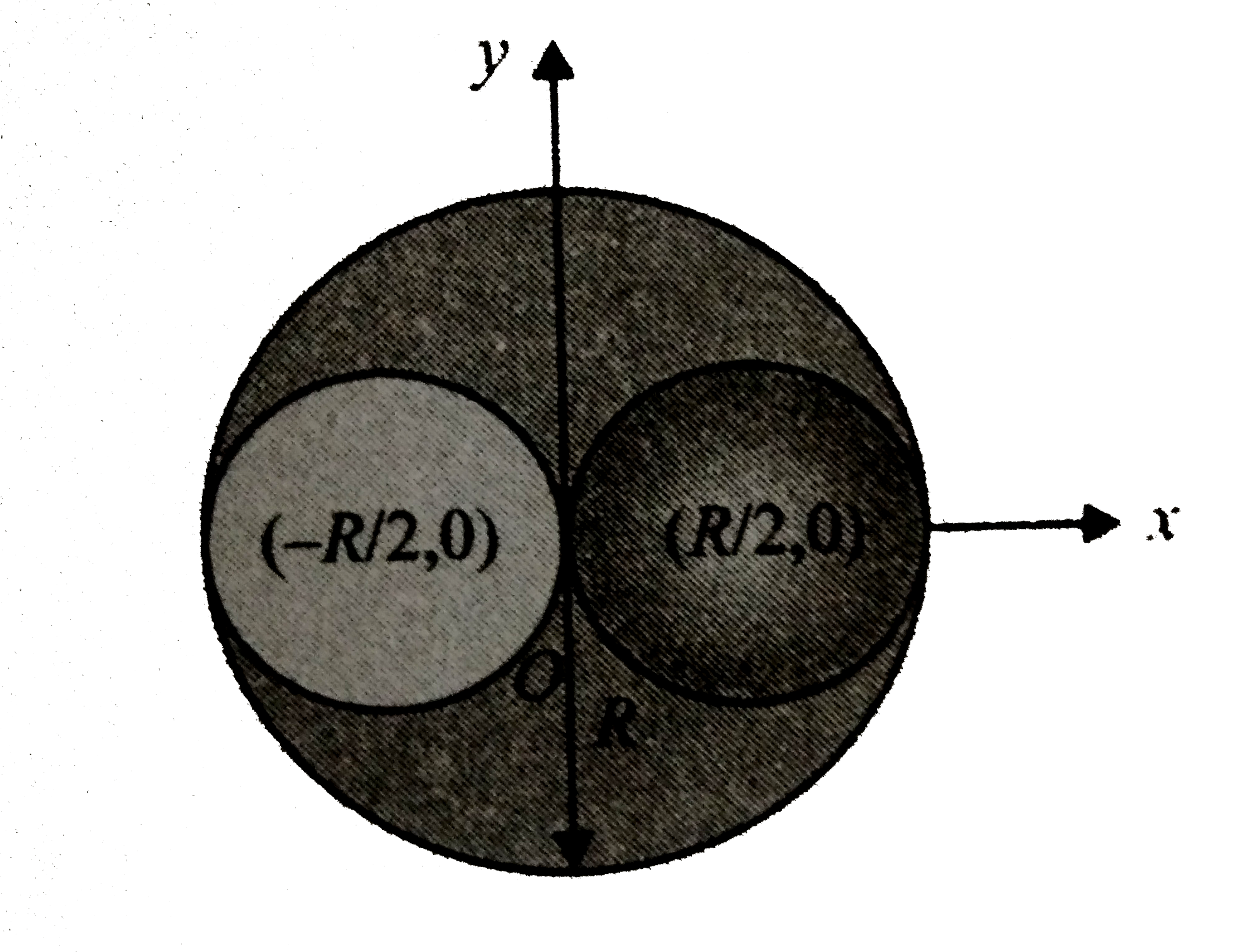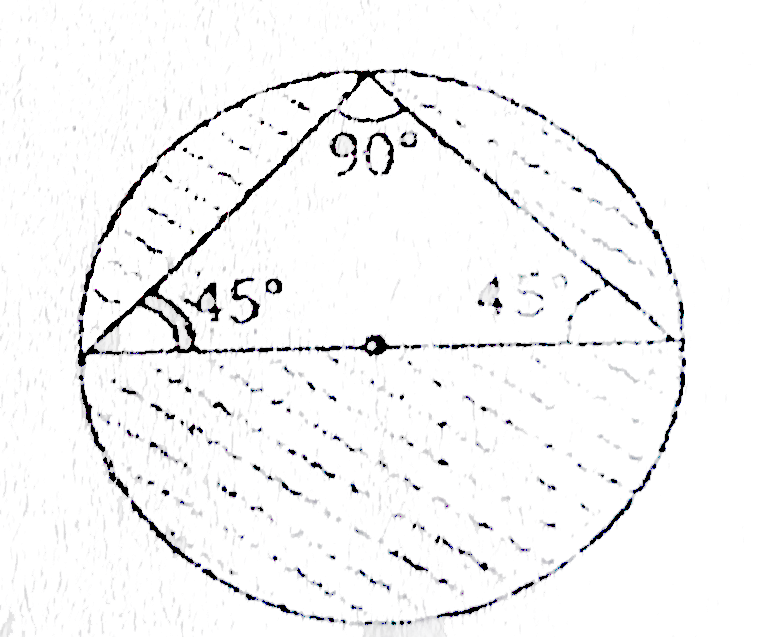A small disc of radius 2cm is cut from a disc of radius 6cm. If the distance their centers is 3.2cm, what is the shift in the center of mass of the disc?
To solve the problem of finding the shift in the center of mass when a small disc is cut from a larger disc, we can follow these steps:
Step 1: Define the Problem
We have a larger disc of radius R=6cm and a smaller disc of radius r=2cm. The distance between their centers is d=3.2cm. We need to find the shift in the center of mass when the smaller disc is removed from the larger disc.
Step 2: Set Up the Coordinate System
Assume the center of the larger disc is at the origin (0, 0) of a coordinate system. The center of the smaller disc, which is cut out, will be at the point (3.2, 0) on the x-axis.
Step 3: Calculate the Masses
Let the mass of the larger disc be M and the mass of the smaller disc be m. The mass can be calculated using the formula for the area of a disc and the surface density σ:
- Mass of the larger disc:
M=σ⋅πR2=σ⋅π(62)=36πσ
- Mass of the smaller disc:
m=σ⋅πr2=σ⋅π(22)=4πσ
Step 4: Calculate the Shift in Center of Mass
The center of mass of the system after removing the smaller disc can be calculated using the formula:
XCM=M⋅0−m⋅3.2M−m
Substituting the values of M and m:
XCM=36πσ⋅0−4πσ⋅3.236πσ−4πσ
This simplifies to:
XCM=−4πσ⋅3.232πσ
The πσ cancels out:
XCM=−4⋅3.232=−12.832=−0.4cm
Step 5: Interpret the Result
The negative sign indicates that the center of mass has shifted 0.4 cm in the negative x-direction from the original center of the larger disc.
Final Answer
The shift in the center of mass of the disc is 0.4cm towards the left (negative x-direction).
---
We have a larger disc of radius R=6cm and a smaller disc of radius r=2cm. The distance between their centers is d=3.2cm. We need to find the shift in the center of mass when the smaller disc is removed from the larger disc.
Assume the center of the larger disc is at the origin (0, 0) of a coordinate system. The center of the smaller disc, which is cut out, will be at the point (3.2, 0) on the x-axis.
Let the mass of the larger disc be M and the mass of the smaller disc be m. The mass can be calculated using the formula for the area of a disc and the surface density σ:
- Mass of the larger disc:
M=σ⋅πR2=σ⋅π(62)=36πσ
- Mass of the smaller disc:
m=σ⋅πr2=σ⋅π(22)=4πσ
The center of mass of the system after removing the smaller disc can be calculated using the formula:
XCM=M⋅0−m⋅3.2M−m
Substituting the values of M and m:
XCM=36πσ⋅0−4πσ⋅3.236πσ−4πσ
This simplifies to:
XCM=−4πσ⋅3.232πσ
The πσ cancels out:
XCM=−4⋅3.232=−12.832=−0.4cm
The negative sign indicates that the center of mass has shifted 0.4 cm in the negative x-direction from the original center of the larger disc.
The shift in the center of mass of the disc is 0.4cm towards the left (negative x-direction).
Topper's Solved these Questions
- BOOK - DC PANDEY ENGLISHCHAPTER - CENTRE OF MASSEXERCISE - Check points50videos
CENTRE OF MASS
- BOOK - DC PANDEY ENGLISHCHAPTER - CENTRE OF MASSEXERCISE - Taking it together73videos
CENTRE OF MASS
- BOOK - DC PANDEY ENGLISHCHAPTER - CALORIMETRY AND HEAT TRANSFEREXERCISE - Medical entrance s gallery38videos
CALORIMETRY AND HEAT TRANSFER
- BOOK - DC PANDEY ENGLISHCHAPTER - CENTRE OF MASS, IMPULSE AND MOMENTUMEXERCISE - Comprehension type questions15videos
CENTRE OF MASS, IMPULSE AND MOMENTUM
Similar Questions
A disc of radius r is cut from a larger disc of radius 4r in such a way that the edge of the hole touches the edge of the disc. The centre of mass of the residual disc will be a distance from centre of larger disc :-
View SolutionA disc of radius r is cut from a larger disc of radius 4r in such a way that the edge of the hole touches the edge of the disc. The centre of mass of the residual disc will be a distance from centre of larger disc :-
View SolutionGiven a uniform disc of mass M and radius R. A small disc of radius R/2 is cut from this disc in such a way that the distance between the centres of the two discs is R/2. Find the moment of inertia of the remaining disc about a diameter of the original disc perpendicular to the line connecting the centres of the two discs
View SolutionA uniform circular disc has a radius of 20cm. A circular disc of radius 10cm is cut concentrically from the original disc. The shift in centre of mass is
View SolutionA circular disc of radius R is removed from a bigger circular disc of radius 2R such that the circumferences of the discs coincide. The center of mass of new disc is αR from the center of the bigger disc. The value of α is
View SolutionA uniform disc of radius R is put over another unifrom disc of radius 2R of the same thickness and density. The peripheries of the two discs touch each other. Locate the centre of mass of the system.
View SolutionA circular hole is cut from a disc of radius 6 cm in such a way that the radius of the hole is 1 cm and the centre of 3 cm from the centre of the disc. The distance of the centre of mass of the remaining part from the centre of the original disc is
View SolutionFigure shows a uniform disc of radius R, from which a hole of radius R2 has been cut out from left of the centre and is placed on the right of the centre of the disc. Find the CM of the resulting disc.
 View Solution
View SolutionFrom a circular disc of radius R, a triangular portion is cut (sec figure). The distance of the centre of mass of the remainder from the centre of the disc is −
 View Solution
View SolutionA disc of radis R is cut out from a larger disc of radius 2R in such a way that the edge of the hole touches the edge of the disc. Locate the centre of mass of the residual disc.
View Solution

